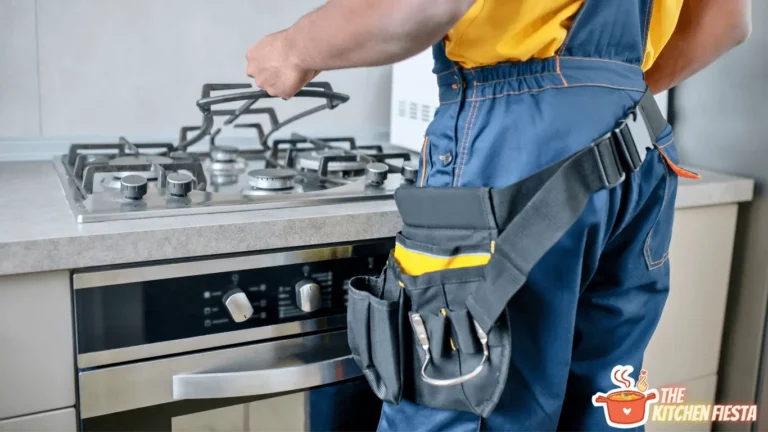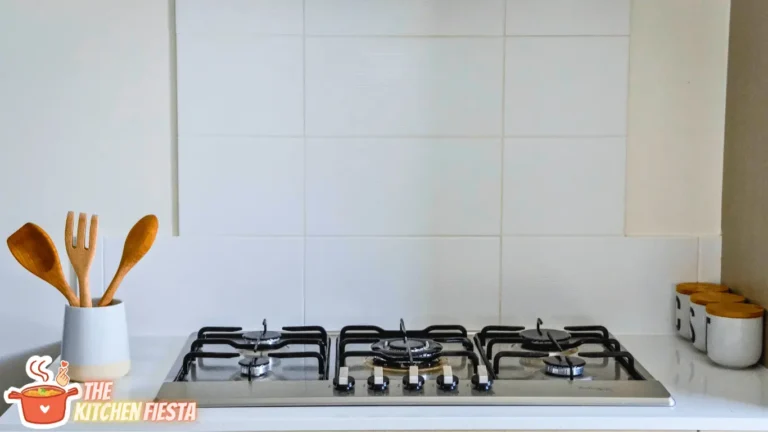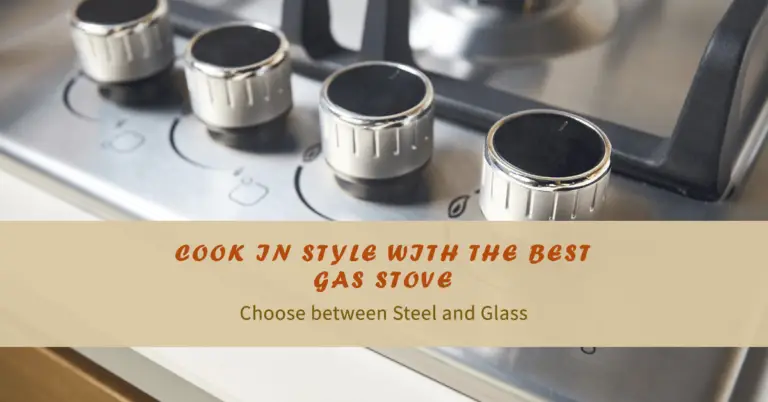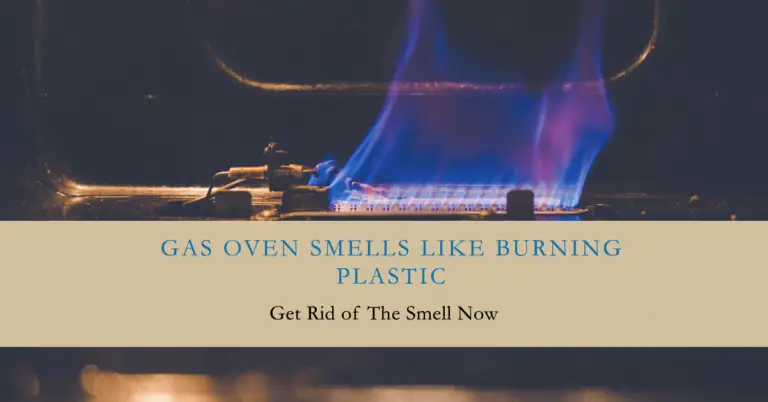Can I use a Coleman propane stove indoors?
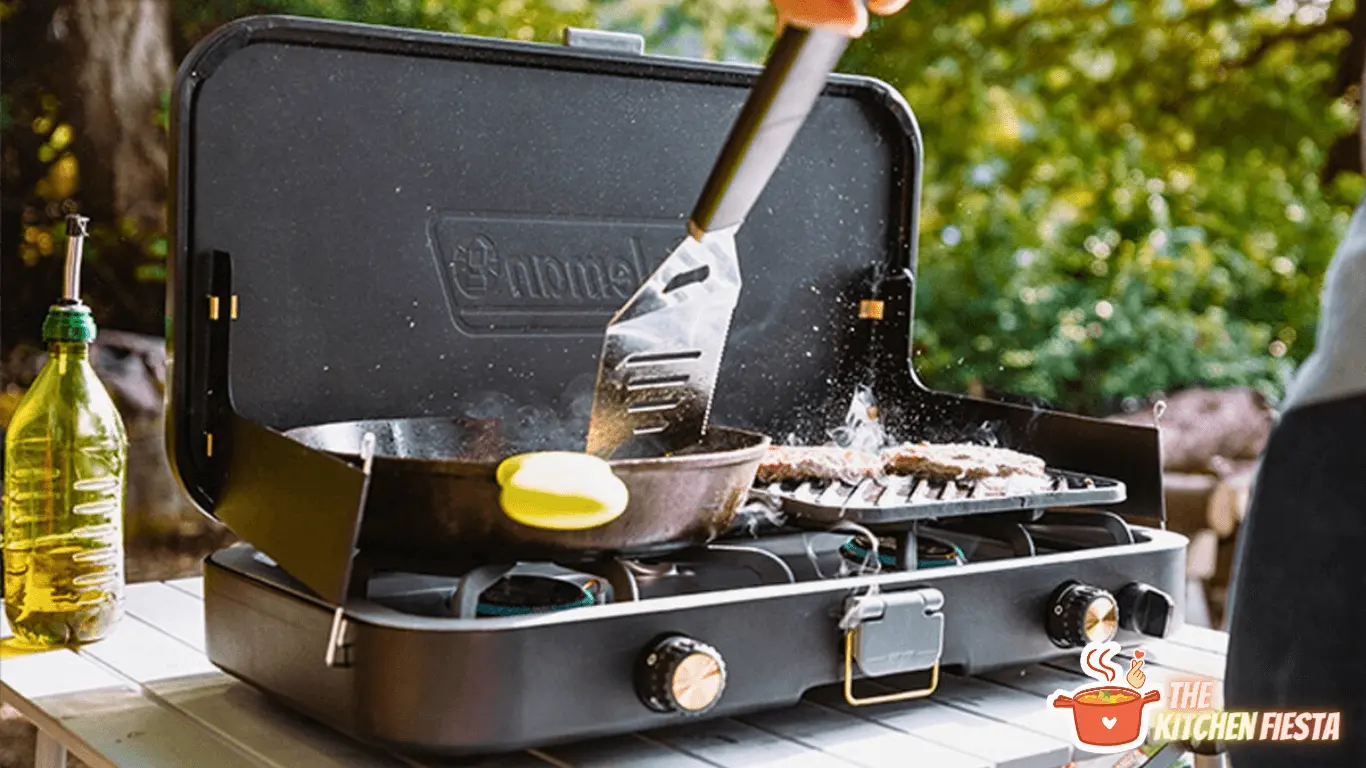
Unleashing the convenience of a Coleman propane stove indoors beckons adventurers and those embracing off-the-grid living. While these stoves are crafted for the great outdoors, using them safely indoors demands attention and vigilance. With ventilation as the key element, preventing the stealthy and lethal carbon monoxide buildup becomes the top priority.
Choosing a well-ventilated area near an open window or door ensures fresh air accompanies your indoor culinary escapades. Embracing safety measures such as a carbon monoxide detector and keeping a fire extinguisher close by becomes the armor for any unforeseen emergencies.
In this article, we navigate the art of using a Coleman propane stove indoors, enabling you to savor the delights of outdoor cooking within the comforts of your home – safely and responsibly.
Understanding Propane Stoves
What is a Coleman Propane Stove?
A Coleman propane stove is a portable stove that uses propane as fuel. It is designed for outdoor use, such as camping, picnicking, or tailgating. It is popular with outdoor enthusiasts due to its portability and ease of use. The Coleman brand is well-known for producing high-quality outdoor equipment, including propane stoves.
How Does a Propane Stove Work?
A propane stove works by burning propane gas to produce heat. Propane is a highly flammable gas that is stored in a pressurized tank. When the stove is turned on, the propane is released from the tank and ignited by a spark or pilot light. The flame produced by the propane heats up the stove’s burners, which heat up the cooking surface.
Propane stoves typically have two or three burners, each of which can be adjusted to control the heat output. The burners are usually metal and have small holes allowing propane to flow through. The heat produced by the flame can be adjusted by turning a knob that controls the flow of propane to the burner.
Propane stoves are designed to be used outdoors, where there is adequate ventilation to prevent the buildup of carbon monoxide. They should never be used indoors, as this can lead to carbon monoxide poisoning, which can be fatal. If you need to use a propane stove indoors, ensure the area is well-ventilated and have a carbon monoxide detector installed.
Indoor Use of Propane Stoves
Propane stoves are a popular cooking appliance for outdoor activities such as camping, hiking, and picnics. However, some may wonder if using a Coleman propane stove indoors is safe.
1. Potential Risks
Using a propane stove indoors can pose some risks, especially if the stove is not used properly. One of the primary risks of using a propane stove indoors is the release of carbon monoxide gas, which can be deadly in high concentrations. Carbon monoxide is a colorless, odorless gas that can build up quickly in enclosed spaces, leading to headaches, dizziness, nausea, and even death.
Another potential risk of using a propane stove indoors is the risk of fire. Propane stoves use an open flame, igniting nearby flammable materials such as curtains, paper, or clothing. Also, propane tanks can leak or explode if not handled properly, leading to a dangerous situation.
2. Safety Precautions
To minimize the risks associated with using a propane stove indoors, it is essential to take some safety precautions. Here are some of the safety precautions you should follow when using a propane stove indoors:
- Ensure adequate ventilation: Proper ventilation is crucial when using a propane stove indoors. Ensure that the room where you are using the stove has sufficient ventilation to allow the exhaust to escape.
- Use a carbon monoxide detector: A carbon monoxide detector can alert you to dangerous levels of carbon monoxide in the air. Make sure to install a carbon monoxide detector in the room where you are using the propane stove.
- Keep the stove away from flammable materials: Ensure that the propane stove is placed away from any flammable materials such as curtains, paper, or clothing.
- Inspect the stove and propane tank regularly: Regularly inspect the propane stove and propane tank for any signs of wear, damage, or leaks. If you notice any issues, stop using the stove immediately and have it repaired or replaced.
Following these safety precautions can significantly reduce the risks of using a propane stove indoors. However, using common sense and exercising caution when using any propane appliance indoors is essential.
3. Ventilation Requirements
Proper ventilation is crucial to ensure safety when using a Coleman propane stove indoors. Any appliance that relies on an open flame releases exhaust into the air, which can cause carbon monoxide poisoning or fires if not properly ventilated.
Installing an overhead range hood is the most consistent way to ensure adequate ventilation. This will help to remove any fumes or exhaust from the indoor air. Opening windows and doors can also help increase air circulation and reduce the risk of carbon monoxide poisoning.
It is important to note that using a Coleman propane stove in a small, enclosed space, such as a tent or camper, is never recommended. Even with proper ventilation, the risk of carbon monoxide poisoning is still present.
When using a Coleman propane stove indoors, it is also important to frequently inspect the unit for leaks, wear, and damage. A carbon monoxide detector should also be used, and a fire extinguisher should be kept nearby in emergencies.
Carbon Monoxide and Propane Stoves
1. Understanding Carbon Monoxide
Carbon monoxide (CO) is a colorless, odorless gas produced when propane is burned. The gas is toxic and can cause serious health problems if inhaled in large amounts. Symptoms of CO poisoning include headaches, dizziness, nausea, and fatigue. In extreme cases, it can lead to death.
When a propane stove is used indoors, the risk of CO poisoning increases. This is because indoor spaces are typically less ventilated than outdoor spaces, making it easier for CO to accumulate. It is important to note that CO is not the only danger associated with using a propane stove indoors. The risk of fire is also a concern.
2. Carbon Monoxide Detectors
To reduce the risk of CO poisoning, it is recommended that a carbon monoxide detector be installed in any room where a propane stove is used. These detectors work by sounding an alarm when CO levels in the air reach a dangerous level.
When purchasing a carbon monoxide detector, choosing one that meets the UL 2034 standard is important. This standard ensures the detector has been tested and meets certain safety requirements. It is also important to test the detector regularly to ensure it works properly.
In addition to using a carbon monoxide detector, it is also important to ensure the propane stove is properly ventilated. This means using the stove in a well-ventilated area or opening a window to allow fresh air to circulate.
Overall, while it is possible to use a Coleman propane stove indoors, taking the necessary precautions to reduce the risk of CO poisoning and fire is important. Using a carbon monoxide detector and ensuring proper ventilation makes it possible to use a propane stove safely indoors.
3. Emergency Use of Propane Stoves Indoors
Propane stoves are a popular choice for outdoor cooking but can also be used indoors in emergencies. However, it is important to take proper safety precautions to prevent accidents and ensure a safe cooking experience.
The most important safety consideration when using a propane stove indoors is ventilation. Propane stoves produce carbon monoxide, a colorless, odorless gas that can be deadly in high concentrations. Therefore, it is essential to use a propane stove in a well-ventilated area to prevent the buildup of carbon monoxide.
Another important safety tip is to keep the propane stove away from flammable materials such as curtains, paper, or other combustible items. It is also important to never leave the stove unattended while it is in use.
When selecting a propane stove for indoor use, it is important to choose a model designed for indoor use with safety features such as automatic shut-off valves in case of a gas leak. It is also important to follow the manufacturer’s instructions for use and maintenance to ensure safe operation.
In summary, propane stoves can be used indoors in emergencies. Still, it is important to take proper safety precautions to prevent accidents and ensure a safe cooking experience. Adequate ventilation, keeping the stove away from flammable materials, and selecting a model designed for indoor use are all important factors to consider when using a propane stove indoors.
Alternatives to Indoor Use of Propane Stoves
While propane stoves are popular for outdoor cooking, they are not recommended for indoor use. The primary reason for this is the risk of carbon monoxide poisoning, which can be fatal. However, there are alternatives to using propane stoves indoors that can provide safe and effective cooking solutions.
1. Electric Hot Plate
An electric hot plate is an excellent alternative to propane stoves for indoor cooking. They are safe, easy to use, and can be used in any room with an electrical outlet. Electric hot plates are available in various sizes and styles, making them suitable for various cooking needs. They are also relatively affordable, ranging from $20 to $100.
2. Alcohol Stove
An alcohol stove is another alternative to propane stoves for indoor cooking. Alcohol stoves burn denatured alcohol, a clean-burning fuel that produces no harmful fumes. They are lightweight, easy to use, and can be used indoors or outdoors. Alcohol stoves are also relatively affordable, ranging from $10 to $50.
3. Butane Stove
A butane stove is a portable stove that uses butane gas as its fuel source. Butane stoves are safe indoors as long as they are used in a well-ventilated area. They are easy to use, lightweight, and can be used for various cooking needs. Butane stoves are also relatively affordable, ranging from $20 to $100.
4. Induction Cooktop
An induction cooktop is an electric stove that uses magnetic fields to heat cookware. Induction cooktops are safe indoors, as they do not produce harmful fumes. They are also energy-efficient, fast, and easy to clean. However, induction cooktops require cookware compatible with magnetic fields, which can be more expensive than traditional cookware.
Several alternatives to using propane stoves indoors can provide safe and effective cooking solutions. When choosing an alternative, it is essential to consider factors such as safety, ease of use, and price.
Conclusion
In summary, using a Coleman propane stove indoors is safe as long as proper precautions are taken. Adequate ventilation is crucial to ensure that indoor air quality remains safe. Using the stove in a well-ventilated area or installing an exhaust fan to remove the exhaust gases is recommended.
Additionally, following the manufacturer’s instructions and guidelines when using the stove is important. This includes using the correct fuel, maintaining the stove regularly, and ensuring it is placed on a stable surface.
If using a propane stove for extended periods, it is recommended to have a carbon monoxide detector installed in the room to detect any potential leaks. It is also important to keep the stove away from flammable materials and never leave it unattended while in use.
So, using a Coleman propane stove indoors can be a convenient and efficient way to cook. Still, it is important to prioritize safety and take the necessary precautions to prevent accidents or health hazards.
Frequently Asked Questions
Can you use a camping stove inside a tent?
Using a camping stove inside a tent is not recommended, as it can be dangerous. Stoves produce carbon monoxide, which is toxic and can be deadly in enclosed spaces. Using camping stoves only in well-ventilated areas, such as outside or in a well-ventilated shelter, is important.
Are propane camp stoves safe?
Propane camp stoves are safe when used properly and with proper ventilation. It is important to read and follow the manufacturer’s instructions carefully and ensure the stove is set up in a well-ventilated area. Carbon monoxide is a byproduct of burning propane, so it is important to be aware of the risks and to take appropriate safety precautions.
Can you use a portable gas stove indoors?
Portable gas stoves can be used indoors, but using them safely and with proper ventilation is important. Like propane stoves, gas stoves produce carbon monoxide, which can be dangerous in enclosed spaces. It is important to ensure that the area where the stove is being used is well-ventilated and that there is no risk of carbon monoxide buildup.
Can you use a butane stove indoors?
Butane stoves can be used indoors, but using them safely and with proper ventilation is important. Like propane and gas stoves, butane stoves produce carbon monoxide, which can be dangerous in enclosed spaces. It is important to ensure that the area where the stove is being used is well-ventilated and that there is no risk of carbon monoxide buildup.
Can you use a propane grill indoors?
Propane grills are not designed for indoor use and should never be used indoors. Propane grills produce carbon monoxide and other dangerous gases, which can be deadly in enclosed spaces. It is important to use propane grills only in well-ventilated outdoor areas.


